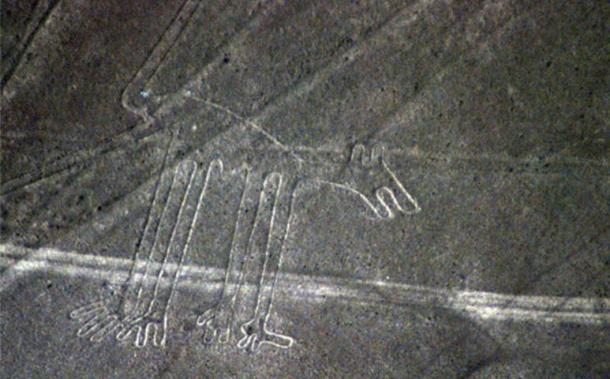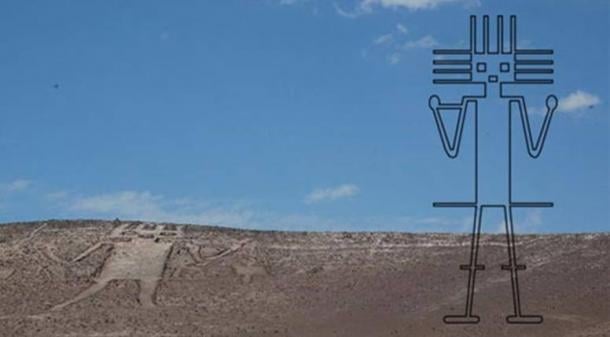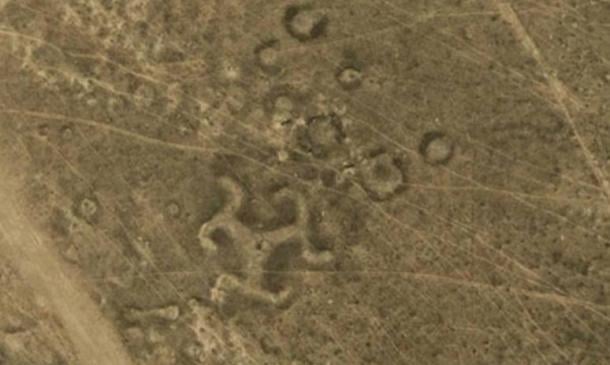10 Amazing Ancient Geoglyphs
The most well-known geoglyphs in the world are undoubtedly the Nazca Lines of coastal Peru. Yet, scattered across the globe are thousands of other geoglyphs that are equally as impressive. The earth carvings remain one of archaeology’s greatest mysteries. Despite a plethora of research on these amazing creations, the purpose of geoglyphs continues to elude researchers and remains a matter of conjecture. Some scientists believe they are linked to the heavens, representing constellations in the night sky. Other experts believe that the lines played a role in pilgrimage, with one walking across them to reach a sacred place. Yet another idea is that the lines are connected with water, something vital to life yet hard to get in the desert. Here we examine ten alluring geoglyphs from across the planet.
The enigmatic Nazca lines of Peru

Located in the arid Peruvian coastal plain, some 400 km south of Lima, the geoglyphs of Nazca cover an incredible 450 km2. They are among archaeology’s greatest enigmas because of their quantity, nature, size and continuity. The geoglyphs depict living creatures, stylized plants and imaginary beings, as well as geometric figures several kilometres long. The startling feature of the Nazca geoglyphs is that they can only really be appreciated from the air, raising questions about how and why they were created. The Nazca lines number in their thousands and the vast majority of them date from 200 BC to 500 AD, to a time when a people referred to as the Nazca inhabited the region. The earliest lines, created with piled up stones, date as far back as 500 BC. Although the lines can in fact be seen from the ground, there is nothing remotely exciting about seeing them from this perspective. However, from the air, their true beauty and the wonders of their creation can be realised. Despite a plethora of research on these amazing creations, the purpose of the lines continues to elude researchers and remains a matter of conjecture. Some scientists believe they are linked to the heavens with some representing constellations in the night sky. However, research has found that there are just as many lines not related to constellations as those that are, meaning that this theory cannot provide a complete explanation. Other experts believe that the lines played a role in pilgrimage, with one walking across them to reach a sacred place such as Cahuachi and its adobe pyramids. Yet another idea is that the lines are connected with water, something vital to life yet hard to get in the desert, and may have played a part in water-based rituals. However, the fact the lines have remained enigmatic have promoted alternative theorists to float ideas about extraterrestrial communication or ‘messages to the gods’.
The puzzling case of the Atacama Giant

The geoglyphs of the Atacama Desert in South America are less familiar than the world-renowned Nazca lines, yet they are far more numerous in number, more varied in style, and cover a much larger area. One of the most intriguing and controversial of the Atacama desert geoglyphs is the so-called Atacama Giant, which continues to stir debate regarding its true meaning and interpretation. The Atacama Giant is an anthropomorphic geoglyph measuring 119 metres in height, making it the largest known geoglyph in the world. It is characterized by a square head and highly stylized long legs. Four lines can be seen coming out from the top of the giant’s head, as well as on each side of its head. There has been no shortage of explanations and theories to account for the strange features of this enormous geoglyph. According to one interpretation, it was a sort of astronomical calendar that indicated the movement of the moon. With this knowledge, it is said that the day, the crop cycle, and the seasons could be calculated. Another interpretation maintains that the Atacama Giant represents a deity worshipped by the local population. Other theories suggest extra-terrestrial visitations, marking of a pilgrimage route, or that it reflects an ancient type of language. Although the function of the geoglyphs of the Atacama Desert still remain a mystery, it is undeniable that they held great importance to the people who lived in the region. It is hoped that the geoglyphs will be preserved for future generations, and that further research may one day uncover their secrets.
Over 50 ancient geoglyphs, including swastika, discovered in Kazakhstan

Archaeologists are calling them the Nazca lines of Kazakhstan – more than 50 giant geoglyphs formed with earthen mounds and timber found stretched across the landscape in northern Kazakhstan. They are designed in a variety of geometric shapes, including crosses, squares, rings, and even a swastika, an ancient symbol that has been in use for at least 12,000 years. The geoglyphs, which are very difficult to see on the ground, were first spotted on Google Earth. Since then, a team of archaeologists from Kazakhstan and Lithuania, have investigated the giant structures using aerial photography and ground-penetrating radar. Their results revealed a wide variety of shapes ranging from 90 to 400 metres in diameter, mostly made of earthen mounds, but one – the swastika – was made using timber. Researchers have not yet dated the structures but their characteristics suggest they are around 2,000 years old. “As of today, we can say only one thing — the geoglyphs were built by ancient people. By whom and for what purpose, remains a mystery,” said archaeologists Irina Shevnina and Andrew Logvin, of Kostanay University, in an email to Live Science.
Leave a Reply